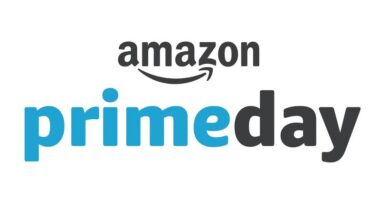The Significance of Effective Calls to Action in Marketing – In the world of marketing, where every brand is vying for attention, the ability to stand out and engage the audience is crucial. One powerful tool that can make a substantial impact on marketing success is the effective use of Calls to Action (CTAs). CTAs serve as the guiding force that directs potential customers towards taking desired actions, such as making a purchase, signing up for a newsletter, or downloading an e-book. This article delves into the significance of these compelling prompts and explores how they can drive conversions and elevate a brand’s presence.

In today’s digital landscape, capturing the attention of potential customers is just the first step. The ultimate goal is to guide them towards taking actions that align with the brand’s objectives. This is where Calls to Action come into play as a vital tool that shapes the user’s journey.
Table of Contents
- 1 Understanding Calls to Action
- 2 Components of an Effective CTA
- 3 CTAs Across Various Platforms
- 4 Driving Conversions with CTAs
- 5 Mistakes to Avoid
- 6 The Psychological Aspect
- 7 CTA Trends in Modern Marketing
- 8 Measuring CTA Effectiveness
- 9 Case Studies
- 10 The Future of CTAs
- 11 Conclusion
- 12 FAQs (Frequently Asked Questions)
Understanding Calls to Action
Defining CTAs
Calls to Action (CTAs) are concise and compelling statements that prompt users to take immediate actions. These actions could range from clicking a button, filling out a form, subscribing to a service, or making a purchase. Essentially, CTAs provide the next steps for users to engage with a brand after consuming content.
Importance of CTAs in Marketing
CTAs are more than mere buttons; they are persuasive triggers that guide users towards conversions. Without effective CTAs, potential customers might lose interest or become unsure about what to do next. A strategically placed CTA acts as a signpost, guiding users in the right direction and maximizing the potential for conversions.
Components of an Effective CTA
Clarity and Conciseness
A successful CTA leaves no room for confusion. It should clearly communicate what action the user is expected to take. Using concise yet persuasive language, CTAs should be easy to understand and motivate users to act immediately.
Creating a Sense of Urgency
Effective CTAs often incorporate a sense of urgency, encouraging users to take action promptly. Phrases like “Limited Time Offer” or “Act Now” instill a fear of missing out (FOMO), compelling users to seize the opportunity without delay.
Placement and Design
Strategic placement of CTAs within content is vital. They should be located where users are most likely to engage, such as at the end of a blog post or on a landing page. Additionally, the design, color, and size of the CTA button should make it visually distinct while aligning with the brand’s aesthetics.
CTAs Across Various Platforms
Website CTAs
Website CTAs serve as virtual guides, directing users towards conversions. Homepages, product pages, and blog posts are prime locations for CTAs. An effective website CTA complements the content and guides users smoothly towards taking action.
Email Campaign CTAs
In email marketing, CTAs entice recipients to click through to landing pages or product pages. The language used in email CTAs should be personalized and action-oriented, encouraging readers to explore further.
Social Media CTAs
Social media platforms are bustling hubs of engagement. CTAs on these platforms can range from “Swipe Up” on Instagram stories to “Learn More” on Facebook posts. The goal is to seamlessly integrate CTAs into the user’s social experience.
Driving Conversions with CTAs
Personalization and Relevance
Generic CTAs may fall flat, but personalized CTAs that resonate with the user can significantly boost engagement. By segmenting audiences and tailoring CTAs accordingly, brands can create a more personalized experience.
A/B Testing for Optimization
Not all CTAs are created equal. A/B testing different variations of CTAs allows marketers to identify which ones perform the best. Even subtle changes in wording or design can lead to significant improvements in conversion rates.
Mistakes to Avoid
Vague and Ambiguous CTAs
A CTA’s purpose should be crystal clear. Vague CTAs like “Click Here” or “Submit” can deter users who are unsure of what they’ll find on the other side.
Overwhelming with CTAs
While CTAs are essential, bombarding users with too many prompts can be overwhelming. It’s important to strike a balance between guiding users and allowing them to explore independently.
The Psychological Aspect
FOMO (Fear of Missing Out)
The psychological principle of FOMO plays a significant role in driving conversions. CTAs that leverage scarcity and exclusivity tap into this phenomenon, motivating users to act swiftly.
Trust-building through CTAs
CTAs can also establish trust by promising value and transparency. Phrases like “No Credit Card Required” or “Cancel Anytime” alleviate concerns and encourage hesitant users to proceed.
CTA Trends in Modern Marketing
Voice Search and CTAs
As voice-activated devices become more prevalent, optimizing CTAs for voice search is gaining importance. Natural language CTAs that mimic conversational interactions are becoming more relevant.
Interactive CTAs
Interactive CTAs, such as quizzes or polls, engage users in a more immersive manner. These prompts provide value while guiding users towards the desired action.
Measuring CTA Effectiveness
Tracking Click-through Rates (CTR)
Click-through rates indicate the effectiveness of a CTA. By monitoring CTR, marketers can gauge whether their CTAs resonate with users and adjust strategies accordingly.
Analyzing Conversion Rates
Ultimately, the success of a CTA is determined by its impact on conversion rates. A high CTR is valuable, but a high conversion rate demonstrates that the CTA successfully led users to take the desired action.
Case Studies
Successful CTA Implementations
Several brands have mastered the art of effective CTAs. Amazon’s “Add to Cart” and Airbnb’s “Book Now” exemplify CTAs that succinctly convey the desired action and trigger conversions.
The Future of CTAs
Anticipating Technological Shifts
As technology continues to evolve, CTAs are poised to undergo a transformation as well. Virtual reality, augmented reality, and immersive experiences are gradually becoming part of marketing strategies. This opens up new avenues for creative and engaging CTAs that interact with users on a deeper level.
Conclusion
In the realm of marketing, where engagement and conversions are paramount, effective Calls to Action play a pivotal role. These succinct yet compelling prompts guide users towards desired actions, translating into higher conversion rates and business success. By understanding the psychology behind CTAs, optimizing their placement and design, and adapting to emerging trends, brands can harness the power of CTAs to enhance their marketing strategies.
FAQs (Frequently Asked Questions)
1. What exactly is a Call to Action (CTA)? A Call to Action (CTA) is a concise and persuasive prompt that encourages users to take a specific action, such as making a purchase or signing up for a newsletter.
2. How do CTAs contribute to marketing success? CTAs guide users towards desired actions, increasing the likelihood of conversions and engagement. They provide a clear pathway for users to interact with a brand.
3. Are there different types of CTAs for different platforms? Yes, CTAs can vary depending on the platform. Website CTAs, email CTAs, and social media CTAs are tailored to fit the context and user behavior on each platform.
4. Can CTAs be personalized for different audiences? Absolutely. Personalized CTAs resonate more with users, as they feel the prompt is specifically relevant to their needs or preferences.
5. How can I measure the effectiveness of my CTAs? Tracking metrics like click-through rates (CTR) and conversion rates will give you insights into how well your CTAs are performing and whether they are driving the desired actions.
Don’t miss | 7 Reasons Companies Should Prioritize Marketing Efforts During a Recession









